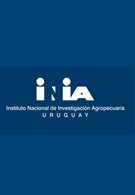The bronze bug, Thaumastocoris peregrinus Carpintero et Dellape (Heteroptera Thaumastocoridae), is one of the most important emerging pests of Eucalyptus LHeritier plantations worldwide. In the development of strategies to control this pest, establishing effective rearing protocols is fundamental to future research programs. We assessed life-history parameters of the bronze bug in a newly designed mass rearing strategy. Separated units were set up to contain different developmental stages. Egg production by females reared on commonly found Eucalyptus grandis Hill ex Maiden and Eucalyptus tereticornis Smith was evaluated in order to determine which plant species to use in rearing. Females laid more eggs on E. tereticornis than on E. grandis, so the former species was chosen for the rearing. A cohort of 207 eggs was followed in Petri dishes until the last individual died or reached the adult stage. We followed egg production by 15 adult couples from the original cohort. Preparation of 150-200 dishes with hatching eggs per week allows for an average production of 7,500 eggs per week. Under our rearing conditions, eggs started hatching on day six, and the first adults were obtained 23 days after oviposition. Almost half of the eggs did not hatch, and the highest nymphal mortality was recorded in the second instar, while the lowest mortality occurred in the last instar. We discuss the relevance of this mass rearing strategy, both within the context of basic behavioural studies of T. peregrinus, and as a tool for the mass rearing of the biological control agent, Cleruchoides noackae Lin et Huber.

